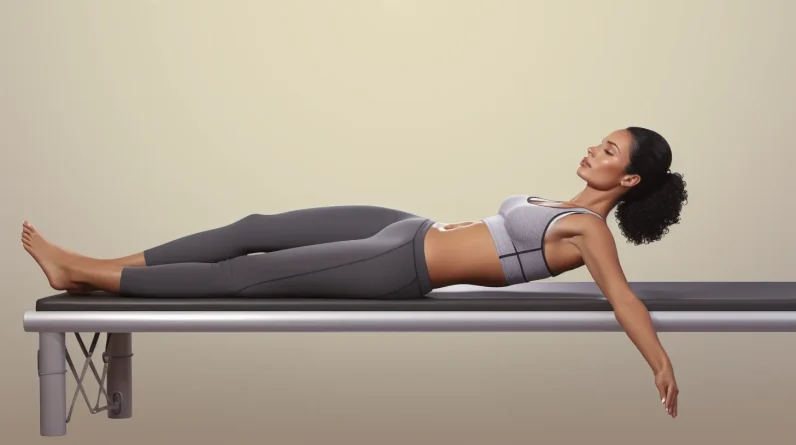
Did you know that nearly one in three women will experience a pelvic floor disorder in their lifetime? Maintaining a healthy pelvic floor is crucial for overall well-being and core strength.
In this article, we will explore effective exercises and tips to strengthen your core and support pelvic floor health. Whether you’re a new mom, an athlete, or simply someone seeking to improve their core stability, this guide will provide you with the knowledge and tools you need to achieve a stronger and healthier pelvic floor.
Key Takeaways
– Pelvic floor health is important for overall well-being and core strength.
– Common symptoms of pelvic floor dysfunction include urinary incontinence, frequent urination, pelvic pain, and pain during sexual intercourse.
– Regular pelvic floor exercises, such as Kegels, can strengthen the muscles and improve control.
– Maintaining a healthy weight, avoiding heavy lifting, and practicing proper lifting techniques are important for pelvic floor health.
The Importance of Pelvic Floor Health
Pelvic floor health plays a crucial role in maintaining overall wellness and preventing various health complications. This often overlooked part of our body is responsible for supporting our bladder, uterus, and rectum. It also plays a significant role in sexual function and core stability.
Pregnancy is one of the major factors that can impact pelvic floor health. The weight of the growing uterus puts pressure on the pelvic floor muscles, potentially causing weakness or dysfunction.
Identifying signs of pelvic floor dysfunction is important in order to address any potential issues. Some common symptoms include urinary incontinence, frequent urination, pain in the pelvic region, and pain during sexual intercourse. It is important to note that experiencing these symptoms does not mean there is a serious problem, but they should not be ignored. Consulting with a healthcare professional who specializes in pelvic floor health can help diagnose and address any concerns.
Taking steps to maintain and improve pelvic floor health is essential. Regular pelvic floor exercises, such as Kegels, can help strengthen the muscles and improve control. Additionally, maintaining a healthy weight, avoiding heavy lifting, and practicing good posture can all contribute to overall pelvic floor health.
Effective Exercises for a Stronger Core
A robust and well-toned midsection can be achieved through a series of targeted movements that engage and strengthen the underlying muscle groups. Core strengthening exercises are essential for building a strong and stable core, which not only enhances athletic performance but also improves everyday activities and protects against injuries. These exercises target deep abdominal muscles, back muscles, and hip muscles, improving core stability and overall strength.
One effective exercise for core strengthening is the plank. This exercise engages multiple muscle groups, including the abdominals, obliques, and back muscles. Start by lying face down on the floor, then lift your body up onto your forearms and toes, maintaining a straight line from your head to your heels. Hold this position for 30 seconds to a minute, gradually increasing the duration as your core strength improves.
Another great exercise is the bicycle crunch. Lie on your back with your hands behind your head, and lift your shoulders off the ground. Bring your right elbow towards your left knee while straightening your right leg. Then, switch sides, bringing your left elbow towards your right knee. Repeat this movement in a controlled and fluid motion, engaging your core throughout.
Remember to consult with a fitness professional before starting any new exercise program, and listen to your body to avoid overexertion or injury.
Tips for Maintaining a Healthy Pelvic Floor
Proper care and attention to the muscles in the pelvic floor area can contribute to overall well-being and support various bodily functions. The pelvic floor muscles play a vital role in maintaining bladder control and preventing pelvic organ prolapse.
Here are some tips to help you maintain a healthy pelvic floor:
1. Practice Kegel exercises: These exercises involve contracting and relaxing the pelvic floor muscles. Regularly performing Kegel exercises can help strengthen these muscles, improve bladder control, and prevent urinary incontinence.
2. Maintain a healthy weight: Excess weight can put additional pressure on the pelvic floor muscles, leading to weakened support. By maintaining a healthy weight, you can reduce the strain on these muscles and minimize the risk of pelvic organ prolapse.
3. Avoid heavy lifting: Lifting heavy objects can strain the pelvic floor muscles. To protect your pelvic floor, it is important to use proper lifting techniques and avoid overexertion.
Lifestyle Changes to Support Pelvic Floor Health
Lifestyle changes, such as maintaining a healthy weight and avoiding heavy lifting, can contribute to the overall well-being and support of the pelvic floor muscles. In addition to regular exercise, making dietary changes and managing stress can play a crucial role in maintaining a healthy pelvic floor.
Proper nutrition is essential for the overall health of the body, including the pelvic floor muscles. A diet rich in fiber can help prevent constipation, which can strain the pelvic floor. Including foods such as fruits, vegetables, whole grains, and legumes can help maintain regular bowel movements and support pelvic floor health.
Stress can have a negative impact on the pelvic floor muscles. When we are stressed, our muscles tend to tense up, including the pelvic floor muscles. Engaging in stress management techniques such as deep breathing exercises, meditation, or yoga can help relax the muscles and reduce tension in the pelvic floor.
Frequently Asked Questions (FAQs)
What Are the Common Symptoms of a Weak Pelvic Floor?
Common symptoms of a weak pelvic floor include urinary incontinence, frequent urination, difficulty emptying the bladder, and pelvic pain. Pelvic floor dysfunction can be treated through various options like pelvic floor exercises, lifestyle changes, and in some cases, surgery.
Can I Do Pelvic Floor Exercises During Pregnancy?
Yes, pelvic floor exercises can be safely performed during pregnancy with certain precautions. These exercises have numerous benefits for both men and women, including improved postpartum recovery and potentially positive childbirth outcomes.
How Long Does It Take to See Results From Pelvic Floor Exercises?
The average time to see results from pelvic floor exercises varies for each individual. Consistency and proper technique are key. Benefits include improved bladder control, reduced pelvic pain, and enhanced sexual function.
Can Men Benefit From Pelvic Floor Exercises?
Pelvic floor exercises for men offer numerous benefits. These exercises can help improve bladder control, enhance sexual function, and prevent or treat issues such as erectile dysfunction. Regular practice is key to achieving optimal results.
Are There Any Specific Exercises to Avoid if You Have a Weak Pelvic Floor?
When it comes to a weak pelvic floor, there are certain exercises that should be avoided to prevent muscle strain. It is important to be mindful of your body’s limitations and seek guidance from a healthcare professional for appropriate modifications and alternatives.
Conclusion
In conclusion, maintaining a healthy pelvic floor is crucial for overall well-being. By incorporating effective exercises such as pelvic floor muscle training and core strengthening exercises, individuals can improve their pelvic floor health and prevent issues like urinary incontinence and pelvic organ prolapse.
Additionally, making lifestyle changes like maintaining a healthy weight and avoiding heavy lifting can further support pelvic floor health. For example, a recent case study demonstrated how a woman who consistently practiced pelvic floor exercises experienced a significant reduction in urinary incontinence symptoms, enhancing her quality of life.







